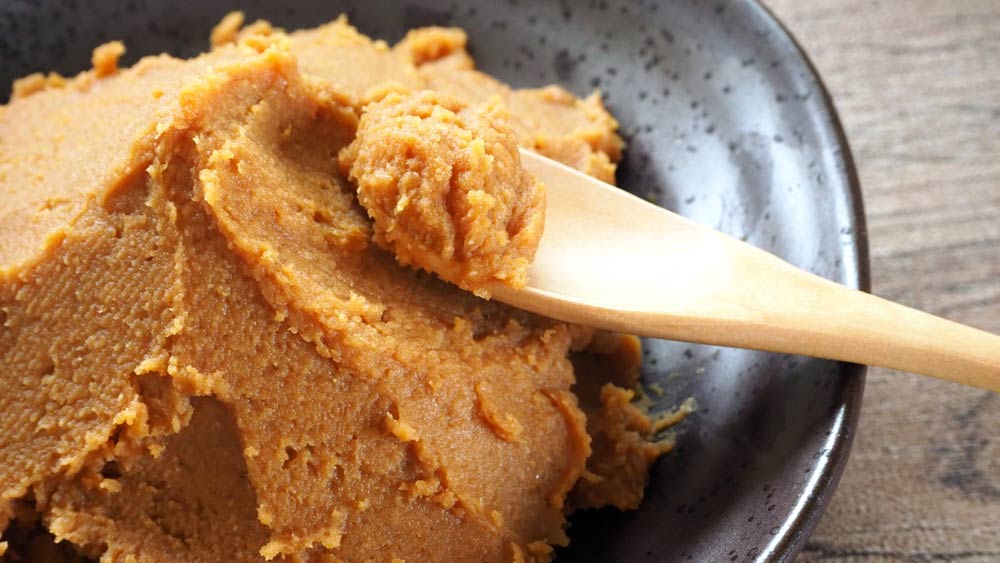
There are three common flavour categories of miso – shiromiso ( white miso), akamiso ( red miso), and awasemiso (mixed miso) – though, again, there are many regional varieties within those broad groups. The temperature and duration of the fermentation process has a profound impact, as does the variety of koji used as the starter culture, and even the fermenting vessel itself. There are many factors that can affect the flavour of miso, aside from the ingredients. It very much depends on the type of miso. Different ingredients and fermentation processes can produce a whole range of flavours from salty to sweet, earthy, and even fruity. Miso tends to be salty, but there are many nuances to both its flavour and aroma. The company produces a high quality miso, rich in flavour, using methods unchanged in over a century. Trading for more than 140 years, Tsurumiso pride themselves on their traditional production techniques and the simple, unadorned brand of miso that they create.

Over the years Marukome has been a continual innovator in miso production and packaging, responding to the purchasing and storage requirements of its consumers. This includes packing their soybean, koji, salt and water mix into cedar barrels and pressing it flat by foot in order to remove air bubbles.Įstablished in the city of Nagano in 1854, Marukome is one of Japan’s largest producers of miso, with its sales accounting for 13% of the country’s entire miso output. Maruya produces its miso the traditional way, using the same methods first established in their home town of Hatcho-machi during the Edo period. Generally, the different types of miso are classified by their main grain ingredient: There are as many types of miso as there are ingredients to include in it, with many areas in Japan having their preferred local recipe. Indeed, countries outside of Japan have started manufacturing their own miso using chickpeas, amaranth, azuki beans, corn, and quinoa, among other ingredients though, as yet, these have gained little traction in Japan itself. While these are traditional Japanese ingredients for miso, in theory any pulses or grains can be used. Today, miso is produced on an industrial scale in vast quantities, with home-made misos becoming ever rarer.Īs well as the koji starter culture, miso can be made from any combination of soybeans, rice, millet, barley, wheat, rye, buckwheat, cycad, or hemp seed. Miso is easy to produce, so local varieties sprung up across the country, which is still reflected in the enormous range of misos available to this day. This allowed miso to be used to flavour other foods, much as it is today. It was not until the Muromachi period (1337 to 1573) that Buddhist monks began to grind soybeans into a paste prior to fermentation. Miso as we know it today is from the Nara period (710-794) and was known as mishio. When Buddhism was introduced to Japan from China in the sixth century, shi was also brought over. While there is evidence of grain- and fish-based misos dating back to the Jōmon period (14,000-300 BCE), it is believed that the first soy-based varieties (known as shi) originated in China, around the third century BCE. Additional ingredients can be added during the fermentation process to enhance or alter the flavour. It is a versatile seasoning, with many different varieties. Miso is also used for pickling meats, fish, and vegetables.

This forms the base of many dishes, including the world-famous miso soup, as well as various sauces and spreads.

It is a simple and popular ingredient, produced through the fermentation of soybeans with salt and koji, resulting in a thick paste. Miso is a traditional seasoning much-used in Japanese cuisine.


 0 kommentar(er)
0 kommentar(er)
